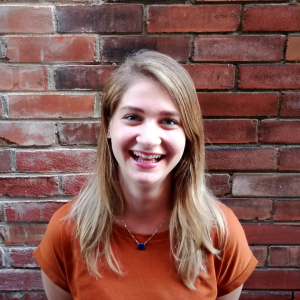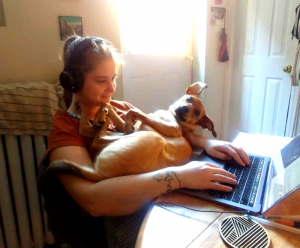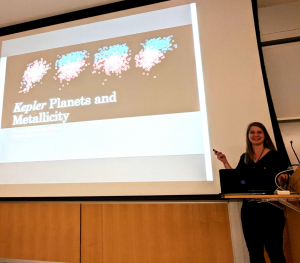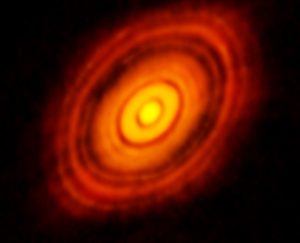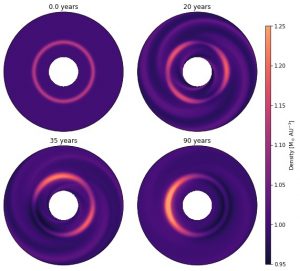Taylor is starting her fourth year as a PhD Candidate in the Department of Astronomy and Astrophysics at the University of Toronto. She did her undergraduate degree at Quest University Canada in British Columbia where she studied physics and astronomy. When she isn’t doing astronomy, she spends her time backpacking, paddling, climbing, and taking care of her rescue dog, Shanty.
How did you first become interested in Astronomy and Astrophysics?
Unlike a lot of folks, I don’t really have one of those ‘aha’ moments where I felt the beginning for a passion in astronomy (most of the programs I applied for in high school were actually in biology). There are just a million small moments where I decided to do the thing that made me happy, and all of those decisions kept bringing me back to astronomy.
Can you tell us a little bit about your specific field of research?
In the simplest of terms, I study the way that starlight shines on gas. More specifically, I care about the disk of gas and dust surrounding a young star that eventually makes planets, called a protoplanetary disk. We used to think these disks were featureless (i.e. looked like a pancake in the sky), but observations by the Atacama Large Millimeter Array (ALMA) tell a completely different story. These disks have giant gaps, rings, arcs, and spirals. The goal of my research is to see if I can make these features (in large 3D simulations) by using only one extra ingredient: starlight.
What’s the most exciting thing about your research?
The most fascinating thing about my research is taking the physics of things that are very familiar, like the air in a room, and applying it in extraordinary situations. It’s fun because at a really fundamental level, everyone understands the way that gas moves because we are surrounded by it every day. But under the circumstances in the protoplanetary disk, that same (relatively) simple physics can make a lot of weird things happen. There are various physical scenarios where a perfectly boring disk can get very lightly disturbed, and that small disturbance will make huge vortexes, or rings and spirals. This would be like if you turned on a fan but then the air in your room turned into a tornado. Thankfully, this doesn’t happen because the air on Earth is generally stable to small disturbances.
What do you hope will be your next step, professionally?
My dream right now is to teach physics and astronomy at a small liberal arts university, like the one where I did my undergraduate studies. But I also wouldn’t be surprised if I ended up in a career that involved astronomy outreach and the outdoors. Before that I want to publish more papers, mentor undergraduate students, and continue working on making my department a more welcoming place.

